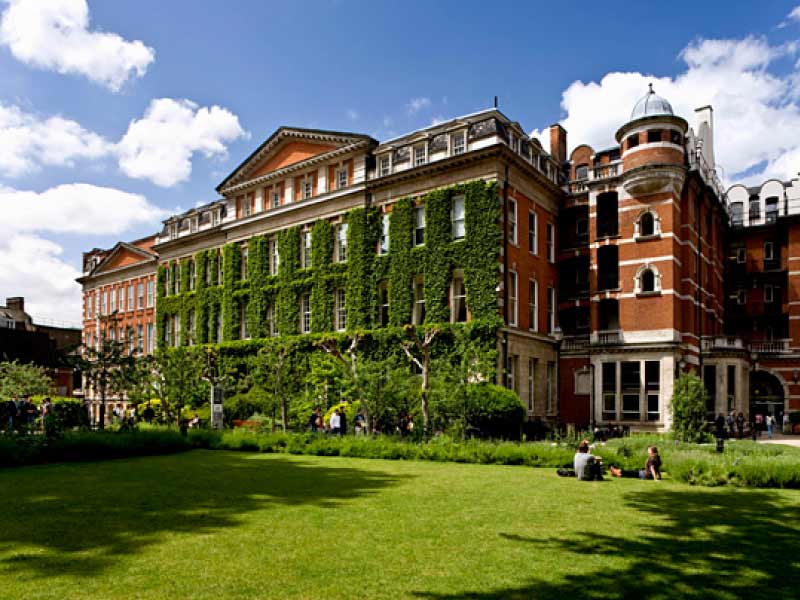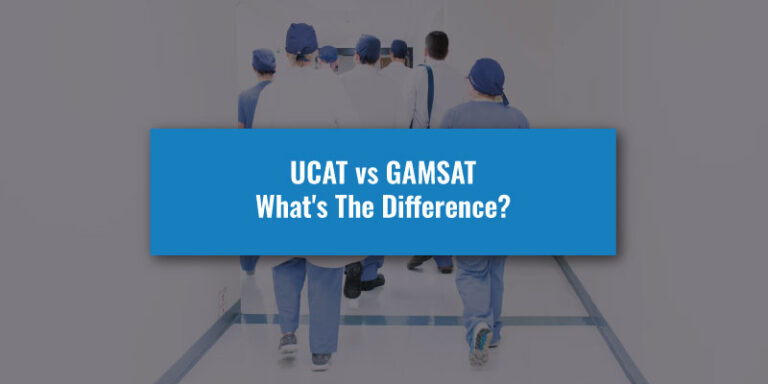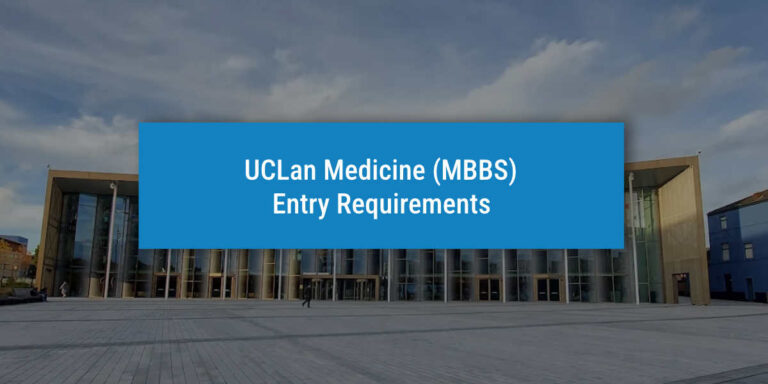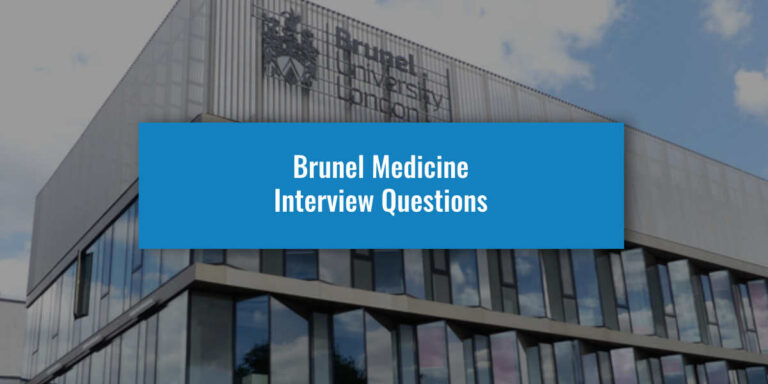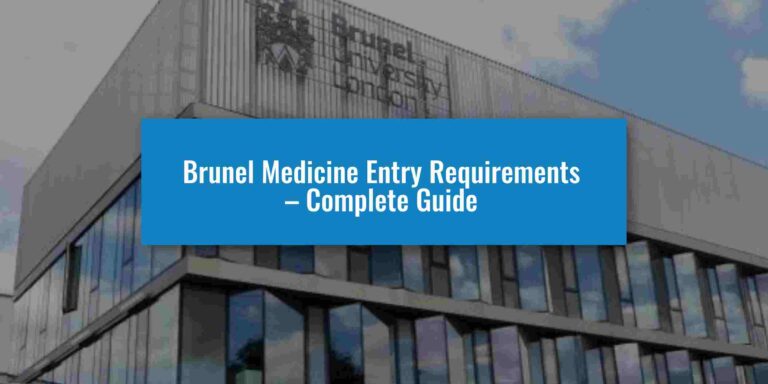For anyone who is hoping to attend a top medical school in the UK, the term Oxbridge will almost certainly come up.
Oxbridge refers to the pairing of the University of Oxford and the University of Cambridge, two of the oldest and most prestigious universities in the world. They are well known for their standards of teaching, their iconic campuses and their wide variety of courses. Among these courses, each university runs a medicine degree, which are amongst the most competitive in the world.
With this amount of prestige, you would expect these to definitively be the best medicine courses in the UK, but this isn’t strictly the case. Although these medical schools are some of the highest rated in the country, there are more elements to consider when it comes to choosing your medical school.
This guide will provide you with key information that you will need when deciding where to study medicine. With this information, you may find that Oxbridge isn’t right for you, or you may wish to double down on your choice and begin working on your application. Either way, it is important to consider options outside of Oxbridge as you will need to provide four options for your medicine application. Let’s get started:
Oxbridge Medical Schools
Choosing between Oxford and Cambridge is a major decision on its own which will require plenty of research about elements outside of the course itself. Our Oxford vs Cambridge Guide explores the differences between the two unis and what life is like studying at each, so be sure to check it out if you’re unsure of where you want to apply.
For now, let’s examine their two medicine degrees and see what they offer students. (All rankings are provided by Complete University Guide)
Medical School Opening Year: 1946
UK Medical School Ranking: 2nd
A-Level Requirements: A*AA
Places Available: 150
Applicant Success Rate: 10.7%
Although Oxford University itself was established in the 12th Century, its Clinical School is currently under 100 years old. However, it has consistently ranked amongst the top medical schools in both the UK and the world.
The main medicine course offered by Oxford is a six-year undergraduate course, one year longer than most UK medical schools. This course is sorted by Pre-Clinical studies in Years 1-3 and Clinical Studies in Years 4-6.
Oxford Medical School Teaching Style
Oxford implements a traditional teaching style, which essentially means that students are taught the theory of the subject first which will later be used in a practical setting, hence the Pre-Clinical and Clinical divide. The Clinical years of teaching at Oxford take place in a variety of hospitals around the East Midlands, where evidence-based Medicine is prioritised.
Surprisingly, this is a teaching style exclusive to Oxbridge in the UK, as other medical schools favour different teaching styles which we will learn about later.
As with any other course at Oxford, you will find that many classes are smaller than other medical schools, with both Oxbridge universities priding themselves on their supervision teaching style.
What Are Supervisions?
Supervisions are small-group teaching sessions with an academic expert in their field. There may be multiple supervisions a week. To get the most out of a supervision, you need to be well prepared; don’t just turn up and say “I couldn’t do question 3”. You need to show your working clearly to explain your thinking and you need to tell the supervisor exactly what you got stuck on.
Oxford Medical School Entry Requirements
As you would expect, the process of getting a place at Oxford isn’t easy, and their medicine course is one of the most competitive in the world, with only 10.7% of applicants being successful in 2024. Let’s take a look at what you need to get an offer:
A-Levels & Equivalents:
To be admitted to Oxford Medicine, you need to achieve A*AA with a minimum Grade A in Chemistry and either Biology, Physics Mathematics or Further Mathematics.
For Advanced Higher, you need to achieve AA in Chemistry and Biology, Physics or Mathematics. Plus Highers AAAAA.
For International Baccalaureate (IB), you need to achieve 39 with 366 at Higher Level. Chemistry and either Biology Physics or Mathematics must be taken at Higher Level.
Admissions Test:
Every medical school requires applicants to sit an Admissions Test in the UK called the University Clinical Aptitude Test (UCAT). This is a test of general thinking skills that are important for studying medicine.
Oxford originally used a different admissions test called the Biomedical Science Admissions Test (BMAT), but this was discontinued in 2024.
Interviews:
As well as your Personal Statement and Admissions Test, most medical schools will require you to sit at least one interview. Oxford will typically make you attend a minimum of two interviews, where you will be speaking with the admissions teams of the colleges you have applied for.
All interviews at Oxford are conducted in panel interviews, which is the most traditional form of interview. These sessions will be headed by at least one practising clinician, who will ask you a variety of questions relating to your personal statement and other experiences, as well as testing your practical and academic knowledge. These interviews take place in December and do not provide your result afterwards. Offers and rejections are instead sent out in January.
Oxford Extra-Curricular Activities
Being such a large university, Oxford has a massive selection of societies and teams to join. Both Oxford and Cambridge are great universities for sports, with various famous sporting events taking place each year between the two universities.
There are also plenty of academic societies which all you to both expand your studies and engage with other students in field through social events. Being within the Oxford city centre, the choice of entertainment and social venues is also extremely good and convenient to reach.
Medical School Opening Year: 1540
UK Medical School Ranking: 1st
A-Level Requirements: A*A*A
Places Available: 280
Applicant Success Rate: 15.2%
When compared to Oxford, Cambridge generally appears to be the better medical school of the two, with higher-grade requirements, a higher success rate and its first-place ranking on the medical school tables. Cambridge has always been the more science-centric university of the two, which is evidenced by the much older medical school, dating back hundreds of years before Oxford’s.
Cambridge’s undergraduate course is also a 6-year course that offers three years of practical work in its latter half. Cambridge also offers a wide variety of specialist courses, including Veterinary Medicine and various post-graduate courses.
Cambridge Medical School Teaching Style
Cambridge follows the same 6-year course structure as Oxford, including the same split between Pre-Clinical and Clinical teaching. The first three years are taught with a variety of lectures, practical classes and supervisions, while Years 4-6 see students attending placements in a variety of clinical settings alongside more seminars and tutorials.
Cambridge Medical School Entry Requirements
As we briefly saw, Cambridge’s entry requirements are slightly higher than that of Oxford’s, so let’s take a look at exactly what you need to get a place:
A-Levels & Equivalents:
For A-Levels, applicants need to have achieved A*A*A, one of the highest grade requirements in the country. Among these, applicants need to have studied Chemistry and either Biology, Physics or Mathematics. These requirements also apply to Advanced Highers.
International Baccalaureate requirements are also higher, at 40-42 Points with 776 at Higher Level.
Admissions Test:
Just like Oxford, Cambridge applicants must complete the UCAT. There’s no official cut-off score for the exam and Cambridge hasn’t expressed what they consider to be a “competitive” score. However, as the university is very competitive, you should aim for a score of at least 2800.
Interviews:
Cambridge operates the same interview style as Oxford, requiring applicants to attend at least two panel interviews with their selected applicants. These interviews are run by each college. Cambridge is known for offering more interviews than Oxford, with over 70% of applicants typically being invited per year.
Cambridge Extra-Curricular Activities
Cambridge’s extra-curricular offerings are comparable to Oxford, with a vast number of teams and societies to pick from. Of course, Cambridge students regularly take part in sporting events, but Cambridge is also well known for their scientific societies that take advantage of the facilities available at the university. For medicine applicants in particular this may be an incredibly desirable option to have.
The university is also located in the city centre, although some colleges can be found on the outskirts. Location is something important to consider when choosing your Cambridge College, but each college has their own pros and cons; it depends on what kind of lifestyle you’re looking for at university.
Whether you choose Oxbridge or not, we have a programme that can boost your chances of getting into medical school.
We work with the top 10% of medicine tutors from medical schools across the UK to ensure our students get the support they need in their applications. Combined with our resources and intensive courses, you will more than triple your chances of success when you join UniAdmissions.
Discover our Oxbridge Medicine Full-Blue Programme by clicking the button below to enrol and triple your chances of success.
Non-Oxbridge Medical Schools
So we’ve now learnt more about the Oxbridge Medical Schools, but these make up a very small minority of medical schools in the UK and generate very few of the UK’s doctors. Most applicants will be attending Non-Oxbridge Medical Schools, which are literally every other medical school in the country.
If what you’ve read about Oxford and Cambridge hasn’t made you too enthusiastic, then you should take some time to look at the other universities available throughout the UK. One question you may have when looking at a medical school is “Why would I choose here over Oxbridge?”. This is a valid question to ask, so we’ve included some points that each university has against Cambridge.
Here’s a look at some of the top medical schools you could attend outside of Oxbridge:
Medical School Opening Year: 1829
UK Medical School Ranking: 18th
A-Level Requirements: A*AA
Places Available: 410
Applicant Success Rate: 7%
King’s College London (KCL) is one of the premier universities in London City and offers a wide variety of courses. Its medical school, which is known as the GKT School of Medical Education, was formed in the 17th Century after merging with a series of nearby hospitals.
Like most medical schools, KCL offers a five-year degree as standard, although a six-year option is available with an intercalated degree. These courses are split into three stages that develop theory and clinical skills.
KCL Medical School Teaching Style
KCL uses an integrated teaching style that has been adopted by many medical schools in the UK. Essentially, this teaching style combines elements of various other teaching methods including Problem-Based Learning and Practical Clinical learning. This has been done to increase the variety of education that students received as well as encouraging early patient contact, which is highly desirable for many students.
Clinical teaching is done throughout various hospitals in London while additional learning takes place in lectures and tutorials, preparing students for formative assessments.
KCL Medical School Entry Requirements
A-Levels & Equivalents:
A-Levels: A*AA (with A in Biology and Chemistry)
IB: 35 points with 766 at Higher Level (plus Grade 6 Higher Level Biology and Chemistry).
Admissions Test:
KCL does not use a UCAT cut-off score but is known to have a higher average score amongst those interviewed, being 2788 in 2021.
Interviews:
KCL is the first medical school we’ve looked at today that uses Multiple Mini Interviews (MMI). You can learn more about how these work in our Ultimate MMI Guide, but KCL typically run between 4 and 7 stations which focus on topics like motivation, communication and ethics.
KCL Extra-Curricular Activities
Being in the heart of London, students have access to all of the venues and activities available for those in the city centre. Within the university itself, you will find a lot of societies to choose from. Many of these societies run collaborative events and parties that allow you to socialise with those outside of your course. Societies range from cultural groups to academic and hobby groups, boosted by the universities level of diversity.
King’s College London vs Oxbridge
- Located in Central London, so lot’s of opportunities are available.
- Highly known for their research excellence.
- Cadaveric Dissection offered.
Medical School Opening Year: 1826
UK Medical School Ranking: 9th
A-Level Requirements: A*AA
Places Available: 334
Applicant Success Rate: 9%
University College London (UCL) was founded in 1826, with medicine being one of the original courses offered, although the medical was re-established in 2008 in its current form. Like Oxbridge, UCL offers a 6-year course to students which includes a compulsory iBSc for Scientific Method in Depth and three years of clinical study in the latter half of the course.
UCL Medical School Teaching Style
UCL uses an integrated teaching style, meaning there is a good mixture of lectures, practical tutorials and clinical work. The majority of Years 4-6 involve clinical rotation across a variety of hospitals under different disciplines. The undergraduate teaching is of a fairly traditional style, comparable to Oxbridge.
UCL Medical School Entry Requirements
A-Levels & Equivalents:
A-Levels: A*AA (with A in Biology and Chemistry)
IB: Higher Level Biology and Chemistry with 6 each (39/45 overall for a conditional offer).
Applicants are also encouraged to take an EPQ if available.
Admissions Test:
UCL doesn’t set any kind of UCAT threshold score for applicants. The university had previously used the BMAT.
Interviews:
Interviews at UCL are given based on an assigned ‘priority score’ based on your Personal Statement, BMAT results and grades. 25% of applicants are typically interviewed. In 2023, UCL is preparing to run MMIs as opposed to their usual panel interviews.
UCL Extra-Curricular Activities
Like other London-based medical schools, UCL students are able to enjoy the perks of living in Central London. Many societies take advantage of this, with regular group trips to some of London’s top locations, both for leisure and study. You will also find plenty of niche societies to join, so practically everyone should be catered for.
UCL vs Oxbridge
- Located in Central London.
- Offers a more rigorous and intensive teaching structure.
- One of the largest intake of students in the country.
Medical School Opening Year: 1823
UK Medical School Ranking: 3rd
A-Level Requirements: AAA
Places Available: ~350
Applicant Success Rate: 10.3%
Imperial College London is the third major medical school within Central London, dating back to the founding of Charing Cross Hospital Medical School. The current medical school was formed in 1997 as a merger of various London-based medical schools. Imperial is a primarily STEM university, meaning they have extremely high-quality facilities. Their primary medicine degree lasts six years.
Imperial Medical School Teaching Style
Though classes are in an integrated teaching style, Imperial’s methods are often quite traditional, with three phases of education gradually building students up to full clinical practice. However, the curriculum offer chances for additional clinical training, case-based learning and research skill development.
Imperial Medical School Entry Requirements
A-Levels & Equivalents:
A-Levels: AAA including Biology and Chemistry.
IB: 38 points overall (6 in Higher Level Biology and Chemistry).
Admissions Test:
Imperial previously used the BMAT but now uses the UCAT for its admissions process. Cut off scores are calculated each year based on the results achieved by the applicant cohort. It is stated that Imperial will interview the top 1/3 of applicants.
Interviews:
Imperial runs MMIs with a standard of seven stations covering typical medical questions. Special importance is placed on an understanding of the NHS Constitution. These interviews are formally scored with a system of 10 available points per answer, with 7 points for content and 3 points for communication.
Imperial Extra-Curricular Activities
Once again, Imperial students will have the benefits that come with living in Central London. However, the Student Union bar and Reynolds Building are known to be particularly popular with students. There is also a fairly large sporting community at Imperial, so you will likely find a team dedicated to your sport of choice.
Imperial vs Oxbridge
- Located in Central London.
- A STEM-specific university, with a priority for Medicine.
- Offers Intercalated BSc as standard.
- Early patient interaction.
Access "The Oxbridge Application Vault"
- 300+ page ebook for Oxbridge Applicants
- 25 page ebook for Personal Statement
- 2h+ online course to succeed in any exam
- Online Oxbridge Success Calculator
- 12 page ebook about UniAdmissions
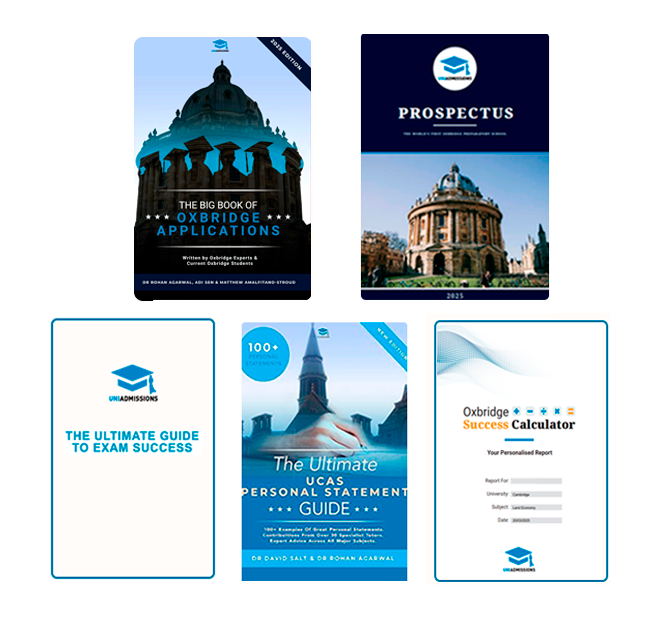
Medical School Opening Year: 1995
UK Medical School Ranking: 5th
A-Level Requirements: A*AA
Places Available: 330
Applicant Success Rate: 41%
Otherwise known as Barts and The London Medical School, this is London’s most recently established medical school through a merger with the much older London Hospital Medical College. Queen Mary (QMUL) offers a five-year course to undergraduates with the option to study abroad in Malta.
Queen Mary Medical School Teaching Style
QMUL operates a Problem-Based Learning system, which encourages students to collaborate in group sessions to solve problems which are used to educate them on the subject. This is supplemented with plenty of patient time and clinical experience, which is increased over time. This learning style is very self-directed and requires a level of independence.
Queen Mary Medical School Entry Requirements
A-Levels & Equivalents:
A-Levels: A*AA including A* in Biology or Chemistry (additional A-Level in Science or Mathematics is required).
IB: 38 points overall (6 in Higher Level Science).
Admissions Test:
QMUL uses the UCAT, which is ranked on a 50:50 weighting between their UCAT score and UCAS tariff. The most recent cut-off score for applicants was 2620.
Interviews:
QMUL applicants must attend a panel interview consisting of two senior staff members/clinical experts as well as a medical student. You will also be able to tour the campus after your interview.
Queen Mary Extra-Curricular Activities
As well as the close distance to all of Central London’s many venues, the range of societies available allows for plenty of social events and additional opportunities. Various societies even provide students with opportunities for voluntary and charitable work, which can provide great benefits to your education.
Queen Mary vs Oxbridge
- Located in Central London, so lot’s of opportunities are available.
- High ratings for graduate prospects.
- First-year patient contact.
Medical School Opening Year: 1893
UK Medical School Ranking: 8th
A-Level Requirements: AAA
Places Available: 225
Applicant Success Rate: 20%
Medicine at the University of Bristol is currently the biggest faculty in the university and is highly rated amongst UK medical schools. The core courses on offer are a five-year standard course and a six-year course which includes a foundation year.
Bristol Medical School Teaching Style
Bristol uses an integrated teaching style, with the traditional setting combined with cutting-edge teaching techniques. As well as later clinical years in the course, there is also plenty of clinical exposure in the early years combined with lectures, practical work and case-based learning.
Bristol Medical School Entry Requirements
A-Levels & Equivalents:
A-Levels: AAA including Chemistry and one other science of maths (contextual offer of ABB available).
IB: 36 points overall with 18 in Higher Level (contextual offer of 32 points with 16 at Higher Level available).
Admissions Test:
Bristol operates fairly high cut-off scores for interviews, with 2021’s threshold being 2940 for Home applicants and 2960 for Internationals.
Interviews:
Bristol interviews applicants in an MMI format with a mixture of stations involving questions and practical tasks. These are used as a demonstration of relevant skills.
Bristol Extra-Curricular Activities
The University of Bristol has over 350 societies to pick from, covering a huge range of sports, hobbies, arts and cultures. Bristol city itself is also filled with a mixture of traditional and modern activities, venues and facilities, meaning you’ll have access to everything you need to engage in further studies and enjoy yourself.
Bristol vs Oxbridge
- A high applicant success rate.
- Early clinical exposure in hospitals and other settings.
- A more modern lifestyle within a progressive city.
Medical School Opening Year: 1970
UK Medical School Ranking: 33rd
A-Level Requirements: AAA
Places Available: 220
Applicant Success Rate: 11%
As one of the five core faculties of Nottingham University, this medical school offers a five-year undergraduate course and a six-year course for wider access course with a foundation course. More courses are also available via their collaboration with the University of Lincoln.
Nottingham Medical School Teaching Style
Nottingham Medical School describes its curriculum as integrated, with a focus on teaching students the fundamentals of medical theory and plenty of early patient contact. Moreover, students in the first year are assigned a personal tutor who guides their clinical learning and acts as a form of pastoral support throughout their time at the university.
Nottingham is also known for its double-degree approach, in which graduates receive both a BMedSc degree and a BMBS qualification by the end of their course.
Nottingham Medical School Entry Requirements
A-Levels & Equivalents:
A-Levels: AAA including Chemistry and Biology (contextual offer of ABB available).
IB: 36 points overall with 6, 6, 6 at Higher Level with Chemistry and Biology (contextual offer of 6, 6, 5 at Higher Level available).
Admissions Test:
Nottingham implements a unique scoring system based on your UCAT result and your GCSE scores when shortlisting applicants. A total of 12 points can be earned with a top UCAT score. Applicants who achieve Band 4 in the SJT are automatically rejected.
Interviews:
Nottingham interviews applicants in an MMI format. There are 8 stations in total during this interview, one of which is a medical role-play.
Nottingham Extra-Curricular Activities
Medical students at Nottingham University have the option to join the uni’s Medical Society (MEDSOC), which also runs a selection of specialised, medicine-specific sub-societies like Musical Medics and HEARTSTART. Being located in a smaller town, students here have the option to explore more green spaces, as well as enjoy the perks of living in the town centre.
Nottingham vs Oxbridge
- Offers a unique Dual-Degree approach to teaching.
- Offers regular full-body dissection.
- Fairly average living costs.
Medical School Opening Year: 1825
UK Medical School Ranking: 28th
A-Level Requirements: A*AA
Places Available: 400
Applicant Success Rate: 30%
Birmingham is the home to one of the oldest and largest medical schools in the country outside of London and Oxbridge, with a legacy that could rival either. Their core medical course is titled Medicine and Surgery MBChB, which runs for five-years and offers plenty of clinical experience.
Birmingham Medical School Teaching Style
Birmingham implements a unique teaching style known as Enquiry-based Learning. While there are elements of Problem-based Learning present, the philosophy of the method is less about solving problems and more about answering broader questions with no definitive solution. This method allows for independent thought and healthy debate, which are both extremely important characteristics in the field of medicine.
However, there is still plenty of traditional and clinical learning on offer too, with lectures and placements happening regularly. There is also a large variety of assessments to work towards, including written examinations, essays, presentations and oral answers.
Birmingham Medical School Entry Requirements
A-Levels & Equivalents:
A-Levels: A*AA with predicted AAA (Chemistry and Biology).
IB: 32, with 7,6,6 in Chemistry and Biology at Higher Level (plus English and Mathematics at Standard Level).
Admissions Test:
The UCAT only accounts for 40% of your application in the shortlisting process, which is lower than some other universities. There is also no strict cut-off score.
Interviews:
Birmingham uses an MMI format to interview applicants. Typically there are 7 stations to complete which cover skills like critical thinking and interactions in varied settings. A final score is assigned based on your performance which is used in the offer-making process.
Birmingham Extra-Curricular Activities
Birmingham is one of the other major cities outside of London in England, so students always have enough places to go for entertainment and hobbies. Within the university, there are plenty of opportunities for activities from The Guild as well as the Medical Society, both of which plan regular social events and days/nights out.
Birmingham vs Oxbridge
- A high student intake and career prospects score.
- Offers their unique Virtual Learning Environment.
- Lower living costs compared to some other city universities.
Medical School Opening Year: 2007
UK Medical School Ranking: 12th
A-Level Requirements: AAA
Places Available: 290
Applicant Success Rate: 27%
Despite the various changes this institution has made over the years, including a merger and eventual separation with the University of Warwick, Leicester Medical School is currently one of the highest-ranked medical schools in the UK. Students are able to enrol in a standard five-year programme or a six-year programme with a foundation year.
Leicester Medical School Teaching Style
Leicester implements an integrated teaching style that includes a mixture of lectures, tutorials, technology-based learning and clinical teaching, alongside a good amount of self-directed study. Leicester is fairly cutting edge in many ways, being the first university to offer each student a tablet for study purposes and providing clinical exposure from Day 1, which is gradually increased over the years. They are also one of the only universities in the UK to offer full-body dissection as a form of teaching.
Leicester Medical School Entry Requirements
A-Levels & Equivalents:
A-Levels: AAA including Chemistry or Biology and one additional science or Mathematics/Psychology.
IB: 34 points overall with 3 subjects at Higher Level, including Chemistry or Biology plus an additional science.
Admissions Test:
Leicester uses a points system to assess applicants based on the different aspects of their applications. Each applicant is rewarded up to 32 points based on their UCAT score, which is used in the shortlisting process. Applicants who achieve Band 4 in the SJT are automatically rejected.
Interviews:
Leicester interviews applicants in an MMI format. These interviews tend to last about an hour and cover many important factors in medicine, such as empathy, numeracy and communication.
Leicester Extra-Curricular Activities
Leicester medical students will be able to join the Students’ Union Medical Association (LUSUMA), which runs a variety of sub-societies, both academic and casual. Beyond that, there is a good variety of sports teams available and an active nightlife within the town centre.
Leicester vs Oxbridge
- A high staff-to-student ratio.
- Offers full-body dissections.
- Implements a 1-iPad-per-student system.
- Clinical exposure from Day 1.
Medical School Opening Year: 2002
UK Medical School Ranking: 25th
A-Level Requirements: AAA
Places Available: 231
Applicant Success Rate: 40%
The University of East Anglia (UEA) has one of the newest medical schools in the UK, but they have so far been able to achieve very favourable results. They offer a standard five-year medicine course alongside a variety of other more specialised courses like Midwifery and Paramedic Science.
East Anglia Medical School Teaching Style
UEA’s medical school operate a Problem-Based Learning style, meaning students are able to spend much more time in smaller groups learning through practical means, although some lectures and tutorials are still present throughout the course.
As well as this, intercalation is also offered and students will sign up for SSS (Student Selected Studies) in their first year, allowing them to choose a speciality subject. These include Anatomy, Law and Plastic Surgery.
East Anglia Medical School Entry Requirements
A-Levels & Equivalents:
A-Levels: AAA including Chemistry or Biology.
IB: 36 points overall with Higher Level 6 in three subjects, including Chemistry or Biology.
Admissions Test:
UEA uses the UCAT in their selection process by ranking each applicant’s scores to determine who is invited to interview. The score is also used along with their interview ranking system to give out offers.
Interviews:
UEA runs MMIs which typically consist of seven stations. The responses at these stations are scored and used within the offer-making process.
East Anglia Extra-Curricular Activities
The UEAMEDSOC is available for all medical students and offers a variety of sports and sub-societies to take part in. This society was awarded UEA Society of the Year in 2020 and is the largest one in operation at the university.
East Anglia vs Oxbridge
- A heavy emphasis on human qualities in teaching (e.g. empathy).
- Early patient contact and placements.
- Intercalation and Student Selected Studies.
Medical School Opening Year: 1751
UK Medical School Ranking: 6th
A-Level Requirements: AAA
Places Available: 350
Applicant Success Rate: 35%
The University of Glasgow is currently the highest-rated Non-Oxbridge medical school in the UK and is the top medical school in Scotland. Only one medicine course is on offer, which is a five-year MBChB course.
Glasgow Medical School Teaching Style
Glasgow doesn’t have one set teaching style and instead offers a variety of methods to ensure each student finds success. These methods include small-group teaching, lectures, labs, e-learning and clinical studies. One major method used throughout though is Problem-Based Learning, which could be considered its primary teaching style.
Glasgow Medical School Entry Requirements
A-Levels & Equivalents:
A-Levels: AAA including Chemistry and Biology or Physics.
IB: 38 points overall with Higher Level 6 in three subjects, including Chemistry or Biology.
Admissions Test:
The UCAT is used by Glasgow in the admissions process, who typically implements a cut-off score of 2600-2680 each year.
Interviews:
Glasgow runs traditional panel interviews for applicants. These are divided into two sections which focus on general discussions of being a doctor and the applicant’s own future as a doctor.
Glasgow Extra-Curricular Activities
Being in one of Scotland’s largest cities, students at Glasgow have plenty of options when it comes to entertainment and lifestyle. Within the university, you will find all the typical societies, including a strong sports scene with the Glasgow University Sports Association.
Glasgow vs Oxbridge
- Offers a variety of teaching styles through its Spiral Curriculum.
- Highly competitive with Oxbridge in the Ranking Table.
- Lower expenses with the benefits of city living.
Medical School Opening Year: 1881
UK Medical School Ranking: 7th
A-Level Requirements: AAA
Places Available: 220
Applicant Success Rate: 29%
Although one of the smaller medical schools in Scotland, Dundee is regularly featured in the top 10 medical schools in the UK and was previously rated 1st by the Guardian’s Medical School Table. Dundee offers a standard five-year medicine course as well as a six-year Gateway to Medicine course.
Dundee Medical School Teaching Style
Dundee students are taught with an integrated teaching style, beginning with a focus on theory and working up to regular clinical placements. This is taught through a mixture of lectures, team activities, simulation and clinical classes. Dundee also offers placements during the early years and operates cadaveric dissection for studies.
Dundee Medical School Entry Requirements
A-Levels & Equivalents:
A-Levels: AAA including Chemistry and Biology, Physics or Mathematics
IB: 37 points overall with Higher Level 6 in three subjects, including Chemistry and one other science.
Admissions Test:
No cut-off score is specified, but the UCAT accounts for 40% of the shortlisting process, so a higher score is beneficial.
Interviews:
Invited applicants will attend a panel interview, in which multiple scenarios will be explored for a short period of time. This is a test of communication skills and other important factors of medicine.
Dundee Extra-Curricular Activities
Dundee is a very green area, so this medical school is ideal for those who love to explore the outdoors. There are plenty of activities to take part in, such as swimming, sports and walking. Of course, there is still a selection of other societies available and lots of great venues within both the university and the town.
Dundee vs Oxbridge
- Previously ranked 1st above Oxbridge by The Guardian.
- Offers a quieter lifestyle with more outdoor activities.
- Offers unique simulation technology for students.
Of course, these are only a few of the 35+ medical schools in the UK. If a university you’re considering hasn’t been discussed, come back to this page later on as more universities will be added.
Oxbridge or Non-Oxbridge Medicine: Which Should I Choose?
In reality, this is a question that only you can answer. We recommend conducting your own research into the universities you’re interested in to see if they would be the right match for you. Things to check could include:
- The official course webpage.
- The universities site and the site of any societies you may be interested in.
- University reviews and experiences of students.
- The university’s location and surrounding area.
- Both University Ranking Tables.
In regards to why you would choose Oxbridge, the benefits really speak for themselves. These are two of the most renowned universities in the world and are known for their extremely high standard of teaching. Almost any graduate will be able to enter the field of medicine with ease (provided they have the right attitude) as the name holds so much prestige worldwide.
However, much of this can be fairly superficial and you may find that the Oxbridge teaching style or lifestyle just isn’t for you. There are also a few downsides and barriers that may prevent you from applying to Oxbridge:
The Entry Requirements
Cambridge only has a slightly higher grade requirement and Oxford has a pretty standard requirement, but that doesn’t mean it’s easy to get an offer. Both universities are extremely competitive due to the quantity and quality of applicants. Therefore, you’re going to need to aim high on the BMAT and perfect your Personal Statement and interview techniques in order to truly stand a chance.
The Cost of Living
The stereotype is that only rich kids go to Oxbridge. This isn’t true at all and the cost of tuition is actually the same as any other medical school in the UK. However, the issue comes down to living costs. It’s a fact that Oxbridge and Cambridge are expensive cities to live in, so you will need to be prepared to pay a lot for accommodation, living expenses and additional requirements for your course.
The Atmosphere
It’s well known that Oxford and Cambridge are fairly classically styled universities with a deep connection to their history. That’s not to say you’ll be stuck in the past by attending, but everything from the architecture to the traditional formals may not be your cup of tea. This definitely isn’t a negative aspect of Oxbridge – in fact, it’s some people’s dream come true – but it’s certainly something to consider as you’ll be living this way for six years.
Additional Questions to ask
Which style of teaching suits me best?
A degree in medicine is a significant investment of your time. You want to make sure that the course uses a teaching method that you find effective.
Traditional medicine courses focus heavily on scientific lectures, which teach you subjects like anatomy, physiology, and pharmacology. These courses aim to teach you the science of medicine before you start any significant clinical training.
With integrated/systems-based courses, the clue is in the name: clinical training is included in the early days of your course, alongside lectures teaching you medical theory.
The third main style, of course, involves teaching through Problem-Based Learning (PBL) or Case-Based Learning (CBL). If you find that you do not learn best by absorbing lots of information through lectures, then this style of teaching is for you when deciding which medical school suits your personality! With this style of learning, you are given the details of a patient’s health care as a ‘problem’ to solve: it involves learning through projects, group collaboration, and research challenges.
Does it offer an intercalated year?
Many medical schools now offer the option to take a year out of your normal medical curriculum, to study another subject of your choice! Many students do not even know this is an option when deciding which medical school to apply to and miss out.
Some, like Brighton and Sussex Medical School, allow you to move to a different town in the UK for a year. This can be an exciting opportunity to broaden your holistic knowledge of science, improve your research skills, and have a change of scenery from the fast pace of medical school.
Does it offer full-body dissections?
For some, the prospect of doing dissections is intimidating. However, there are many benefits to considering this aspect when choosing which medical school can best further your future clinical career. Doing dissections on real cadavers can be invaluable for familiarising yourself with human anatomy, and serves as practice for specialisation in surgery.
Only a few medical schools in the UK teach through full-body dissection: Nottingham, Brighton and Sussex Medical School (BSMS), Cambridge Medical School, St Andrews, and Imperial College are examples.
What are the student satisfaction scores?
Student satisfaction scores can give you a measure of how much students who attend the school enjoy the course. Other factors you might want to consider: is the medical school situated in a big city, or is it in a more rural, village area? Is it near the beach? If you know that the buzz of the city distracts you from your learning, this might be an area to consider!
What are my strengths as an interviewee?
To maximise your chances of receiving an offer, it helps to figure out the type of interview you perform best in when deciding on which medical school is worth investing time to apply to. Some types of interviews for Medical School include:
Traditional ‘Panel’ Interviews – will often involve a board of interviewers exploring your motivation for studying medicine, your work experiences, personal statement, and your capacity for medical empathy.
Multiple Mini Interviews (MMI) – each station involves a shorter interview or task testing you on particular skills, such as breaking the bad news to patients, empathy, or case-based problem-solving.
Oxbridge interviews are distinct from the two above: they often involve more difficult or unpredictable questions.
We hope that this guide has helped you in your process of choosing your medical school. From here, it’s important to conduct your own research as there is much more to be discovered.
Whether you’re planning to apply to Oxbridge or not, you may need support with your application. UniAdmissions offers the best application support for both Oxbridge and Non-Oxbridge Medicine, so check out our Full-Blue Programmes and find out how you enrol with us today.
If you’ve got your heart set on Oxbridge, UniAdmissions is here to make sure you get your offer.
As the world’s first Oxbridge Prep School, we are experts at getting students into Oxford and Cambridge. Through our resources and expert tutors, we have been able to maintain a success rate three times higher than the standard. Our students are prepared for anything their application throws at them.
Discover our Oxbridge Medicine Full-Blue Programme by clicking the button below to enrol and triple your chances of success.


